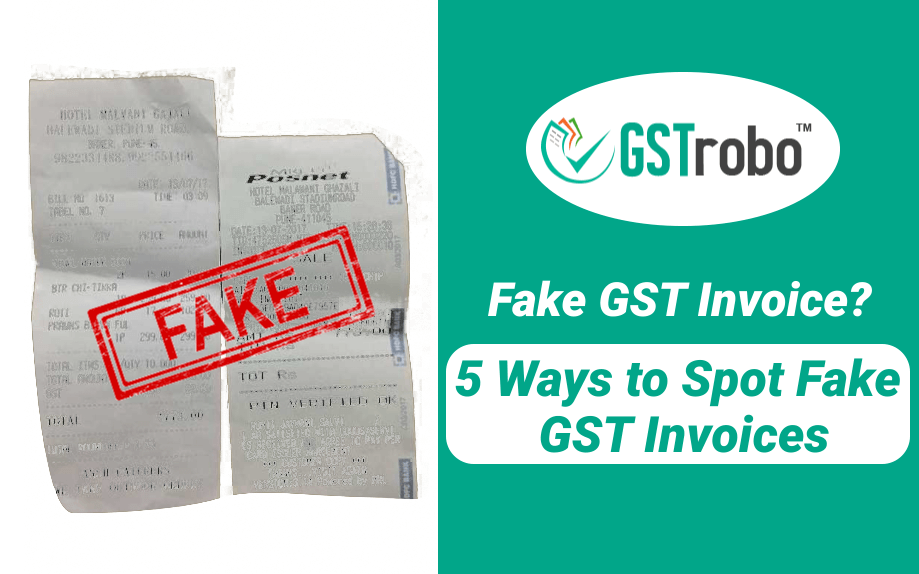Fake GST Invoice? Here Are 5 Ways to Spot Fake GST Invoices
CBIC implemented e-invoicing with a motive to track all the fake invoices under GST and lessen the tax evasion incident in India. But recently there are a lot of fraud cases reported where the taxpayer claimed ITC without actually supplying the goods and raising fake GST invoices for the same. Hence, let’s understand how to identify fake GST bills. We have put all the information that you need to know in order to spot fake invoices under GST.

What is a Fake GST Invoice?
Under GST, it is mandatory for the registered taxable person to issue an invoice with all the valid information such as GSTIN, tax bifurcation, and so forth. In case if a taxpayer issues an invoice with missing vital information, then, in that case, such an invoice can be treated as a fake GST Invoice.
5 Ways to Spot Fake Invoices under GST
1. The person should be registered to charge GST
If a taxpayer is not registered, he/she cannot charge GST from their recipient. Here is the list of the person who needs to obtain GST registration:
- Any person whose aggregate turnover exceeds INR 20 lakhs (INR 10 lakhs in case of special category state).
- Any person who deals in inter-state supply.
- E-com operators.
- Any other person as required by the GST law.
Moreover, any person who does not fall in the above category can obtain GST registration voluntarily.
2. GSTIN should be there on the invoice
GSTIN is a unique identification number that is given to every taxpayer who is registered under GST. And as per the GST law, it is mandatory that an e-invoice has a valid GSTIN, this helps the taxpayer to claim ITC easily.
3. GSTINs should be structured effectively
GSTIN is a 15-digit alphanumeric code that is given to every taxpayer.
- The first 2 characters represent an assigned and unique state code.
- The next 10 characters symbolize the Permanent Account Number (PAN) of a business.
- The 13th character symbolizes the number of entities a business has in a particular state.
- The last or 14th character will stay constant Z.
- The 15th character will be an irregular digit. It could be a letter or a number for inner checks by GST authorities.
4. GSTIN Mentioned on the Invoice Should be Valid
Visit the GST portal to check if a GSTIN on an invoice is valid. You need to follow the below steps:
Step 1: Visit the “search page” on the GST portal
Step 2: Enter the GSTIN mentioned on the invoice
Step 3: Click the “search” button
In case if the GSTIN is valid it will show the following details:
- Trade name and legal name of the business
- Date of GST registration
- Sate and Center Jurisdiction
- Business or taxpayer type
- GSTIN or UIN status
5. Correct GST Rates
There can be a case when the taxpayer charges the wrong GST rates. Either the retailer might not have sorted the item accurately, or the person in question may have committed an error while bifurcating CGST and SGST.
In such cases, the taxpayer needs to visit the GST site to check the rates on goods or/and services. Using this you can check whether the goods or/and services supplied are exempt from GST.
Bottom Line
As we already know that the government is continuously working to prevent tax evasion incidents and fake GST invoicing. We can also help ourselves by using the above 5 ways to spot fake invoices under GST.
